Are you interested in how to grow snapdragons? Snapdragons are colorful, easy-to-grow annual flowers that are commonly available to home gardeners. The spiky flowers are long-lasting when cut and placed in vases. Typically snapdragons have slim dark leaves and come in hot colors such as red, yellow, orange, and also white. This plant is native to the Mediterranean but was also once found growing wild in Italy and Spain. It is part of the foxglove family.
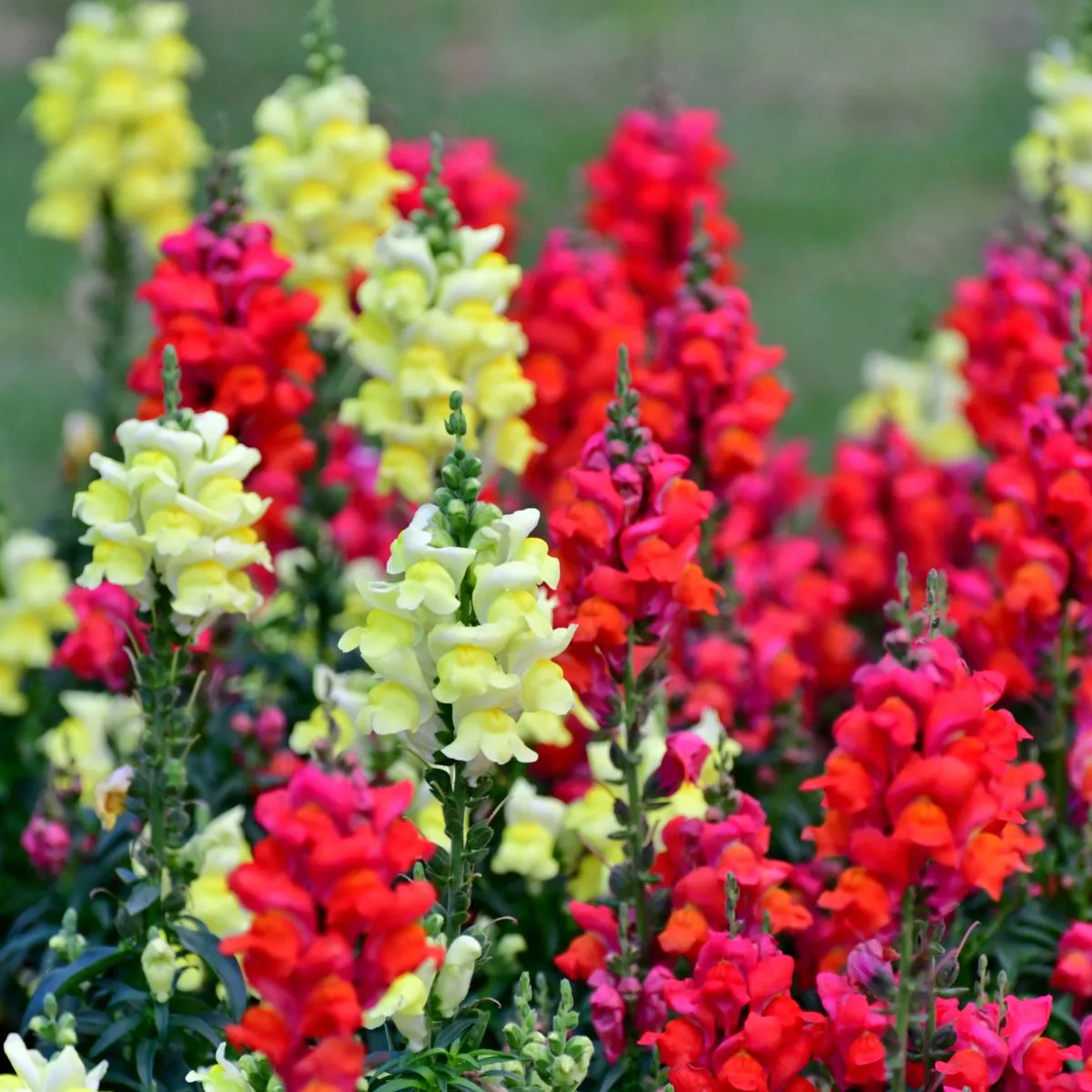
Antirrhinum is the Latin name for the snapdragon, which means “like a nose” but to some this flower looks more like a mouth. Because of this, some also liken the flower shape to a dragon’s mouth and the snapping sound it made when the top of the flower is closed and then quickly opened.
In the language of flowers, the meaning of snapdragon is conflicting. It means both to be gracious and to be deceiving. Perhaps this is why some believe that if a man gives snapdragons to a lady, he is soon to unexpectedly propose.
In ancient times people believed that snapdragons could bring back a woman’s faded beauty or protect people from the spells of witches. Germans once thought that snapdragons could protect a baby from the fear of evil spirits. It’s easy to see how this flower allured many different people and cultures over the years.
Types of Snapdragons
Snapdragons are easy to grow and adapt to many different situations, which is another thing besides their aesthetics that make them popular. Their sturdy stems help make them good cut flowers.
When cut, many snapdragons last for at least a week and sometimes a few days more. Snapdragons are excellent in beds, borders, containers, and window boxes. They also look pretty when naturalized in meadows or in large groups. They flower best at the beginning and end of summer but may be less active in the heat of midsummer.
There are many different sizes and shapes of snapdragons that the home gardener can grow. Some varieties can be as small as one foot tall or as high as three feet tall.
Floral Carpet is a commonly grown type that grows to only about seven inches in height. Rocket Mix comes in many different colors and grows two or three feet tall. Plum Blossom is a variety that grows almost four feet high and has pink and cream-colored flowers.
While snapdragons are known to be susceptible to rust disease, newer types are bred to be rust-resistant, so look for those.
Here are some different types of snapdragons:
- candy showers
- aroma series
- hybrid French vanilla
- magenta mist
- peace breeze
- red spice
- fresh lemon
- Chantilly series
- yellow
- pink
- velvet
- white
- chantilly mix
- bronze
- deep orange
- light salmon
- Floral showers
- Frosted flames
- Dwarf snapdragons
- Lucky lips
- Liberty classic mix
- Intermediate snapdragons
- Night and day
- Madame butterfly
- Rocket mix
- Palette mix
- Royal bridge
- Sonnet series
- crimson
- yellow
- pink
- Tall snapdragons
- Trailing snapdragons
- Twinny snapdragons
- apple blossom
- bronze shades
- peach
- white
- rose
- yellow shades
Great Companion Plants To Snapdragons
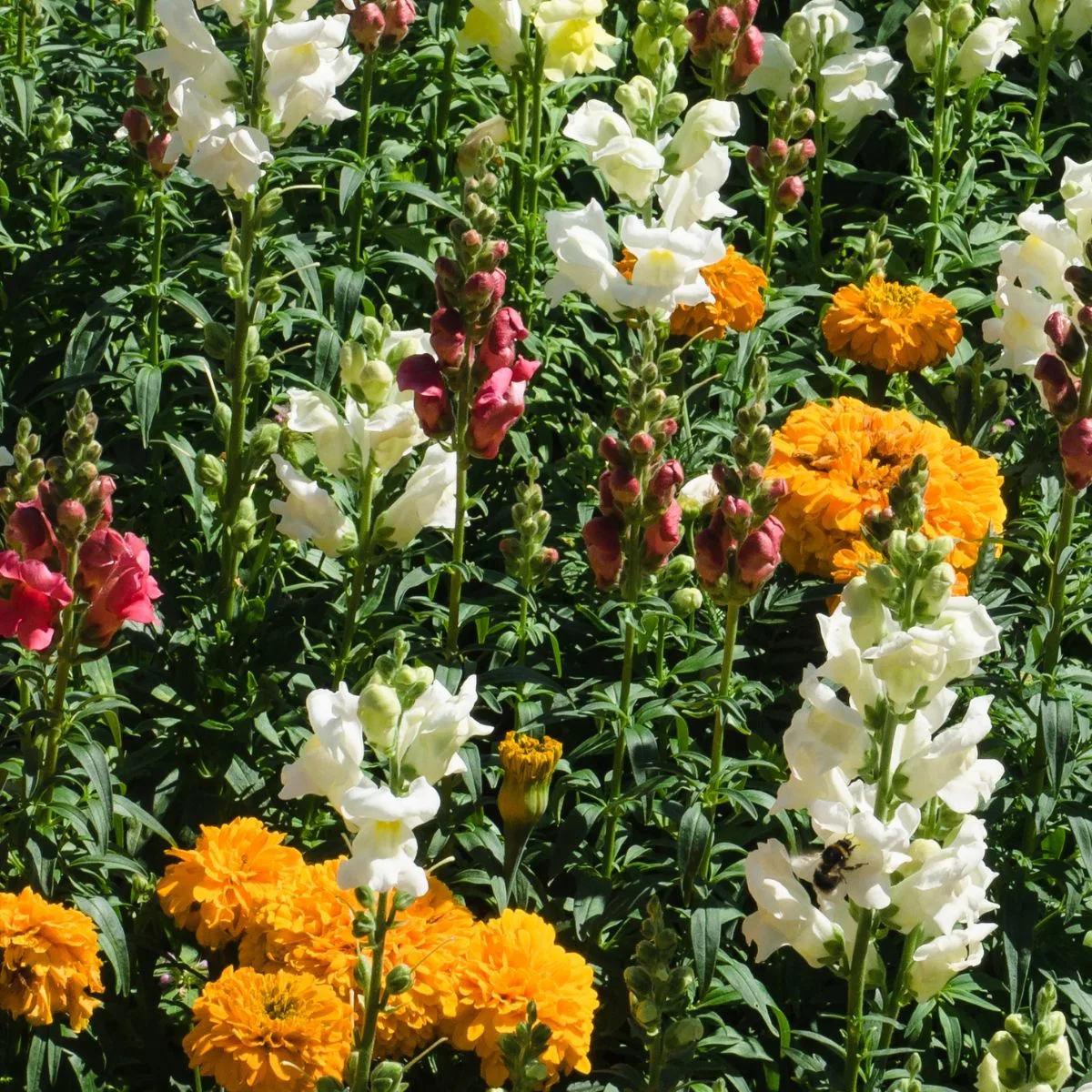
To make the most of your snapdragons, consider planting them alongside these plants:
- Pericallis
- pot marigolds
- love in a mist
- geraniums
- columbines
- pansies
- sweet alyssum
How to Grow Snapdragons
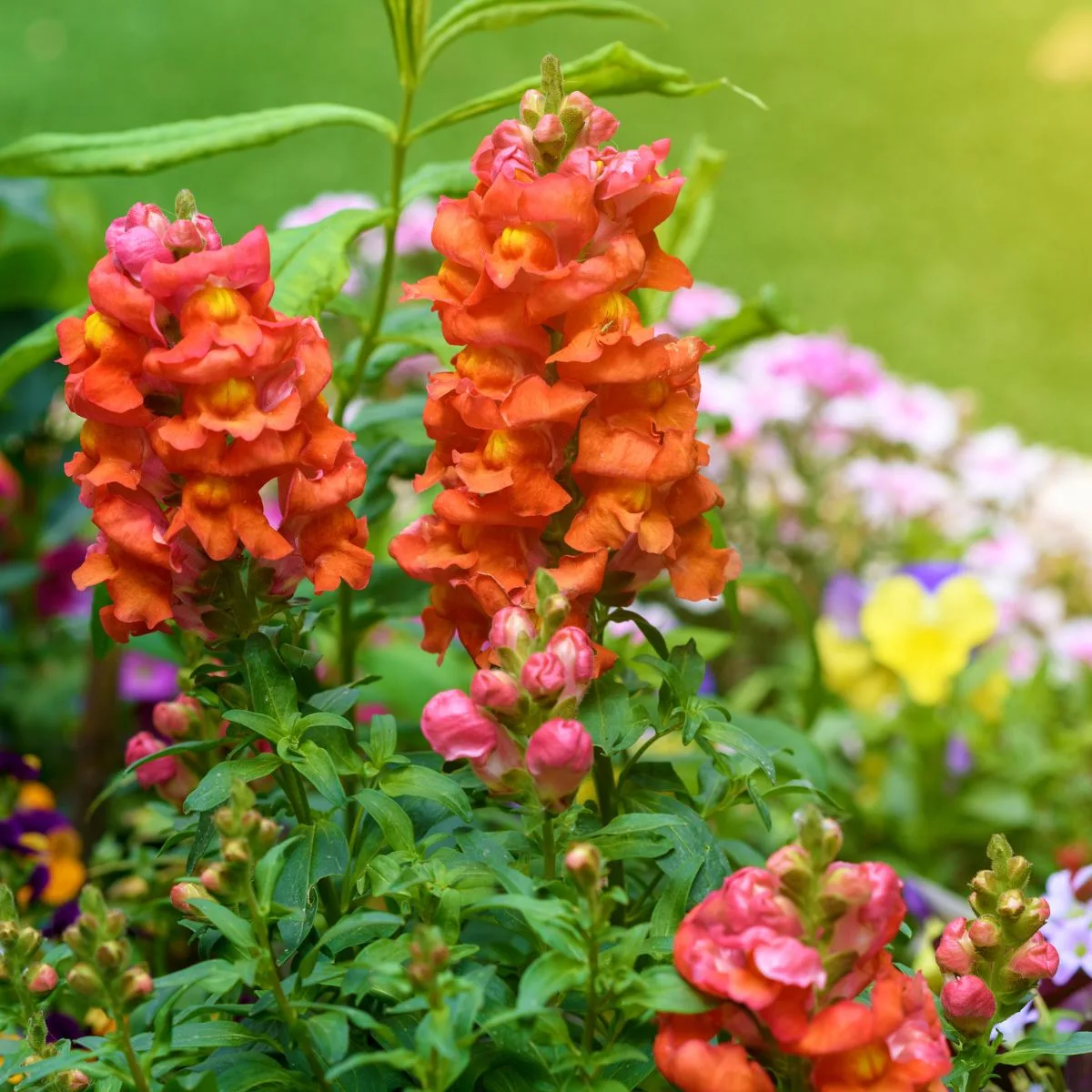
Snapdragons are not hard to grow, but the seeds are very small and slow to start. Snapdragon seeds can take up to three weeks to germinate so unless a special variety is desired home gardeners may want to purchase seedlings from a garden center. But, to start snapdragons from seed, scatter them lightly on the surface of the soil and mist them gently.
Start them indoors about six to eight weeks before the last expected frost date and be prepared to baby them. Keep them moist by lightly covering the pot with a plastic bag. They are ready to plant outdoors when they have at least 4 leaves, not counting the first two that emerge, which are the seed leaves. The nighttime temperature should also be at a consistent 55 degrees for outdoor planting.
Snapdragons grow best in full sun and in average soil. When the snapdragons are still a few inches tall, pinch the top inch or so off of the young plant. This will encourage the plant to become bushy as new stems sprout along the sides.
Cut the snapdragons back when they finish flowering to stimulate more blossoms. If this is not done they will stop blooming and go to seed. Some snapdragons will reseed themselves in the garden if left alone. These flowers can also tolerate some frost after they have been established so plan them for the fall garden.
Light requirements
They will do best in full sun to partial shade. When the temp heats up, they may not bloom at all. Planting them in partial shade can help with this so they make it through the summer and have a chance to bloom again in the fall.
Soil requirements
They prefer a pH of 6.2-7.0, neutral soil, that is rich in nutrients and very well-draining. Because they are short-lived plants, they don’t feed a lot but organic matter can help them look their best when they are blooming.
Temperature requirements
They are hardy in USDA zones 7-11 but prefer cooler temperatures. When it comes to temperature, snapdragons are fairly tolerant, but they prefer cool weather. In fact, snapdragons may even stop blooming if the temperature gets too hot. So, if you’re looking to grow snapdragons, be sure to choose a spot that will give them the cooler temperatures they crave.
Water requirements
It’s really important to provide your snapdragons with a lot of water. When you’re just starting out, you’ll want your seedlings to be kept moist for the first few weeks. After they’re established, your snapdragons need about an inch of water per week when there isn’t rainfall. Be sure to avoid overhead watering. Allow the top inch of soil to dry out fully between waterings.
Tips for Growing Snapdragons
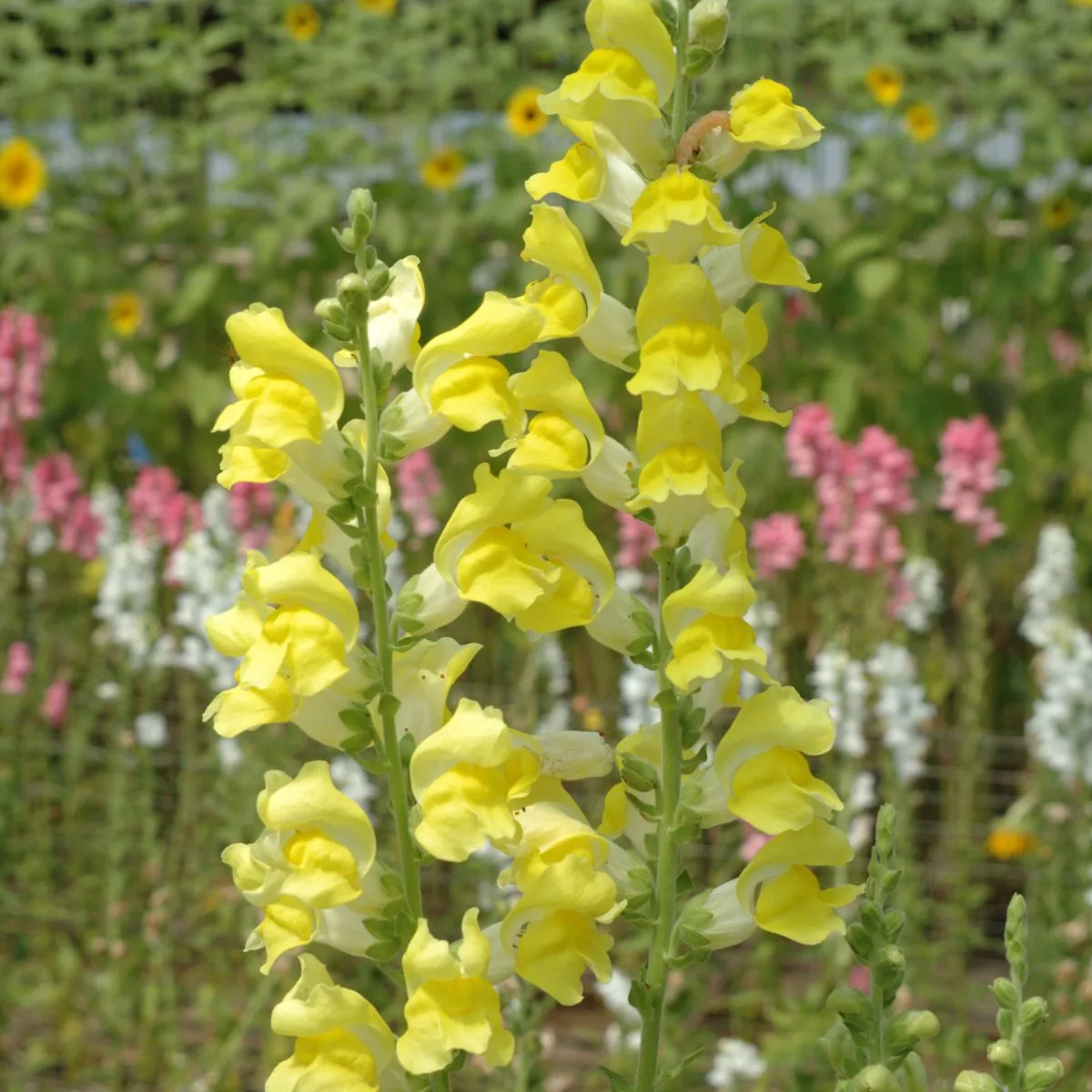
- Snapdragons like full sun, so choose a spot in your yard that gets at least six hours of direct sunlight per day.
- Snapdragons need well-drained soil, so if your soil is heavy or clay-like, mix in some sand or organic matter to improve drainage.
- When planting snapdragons, space the plants about 12 inches apart.
- Once the plants are established, water them deeply once a week. Allow the soil to dry out somewhat between watering.
- To encourage more blooms, pinch off the spent flowers (the ones that have turned brown).
- At the end of the growing season, cut back the plants by half their height. This will help them to overwinter and return again next year.
Fun Facts About Snapdragons
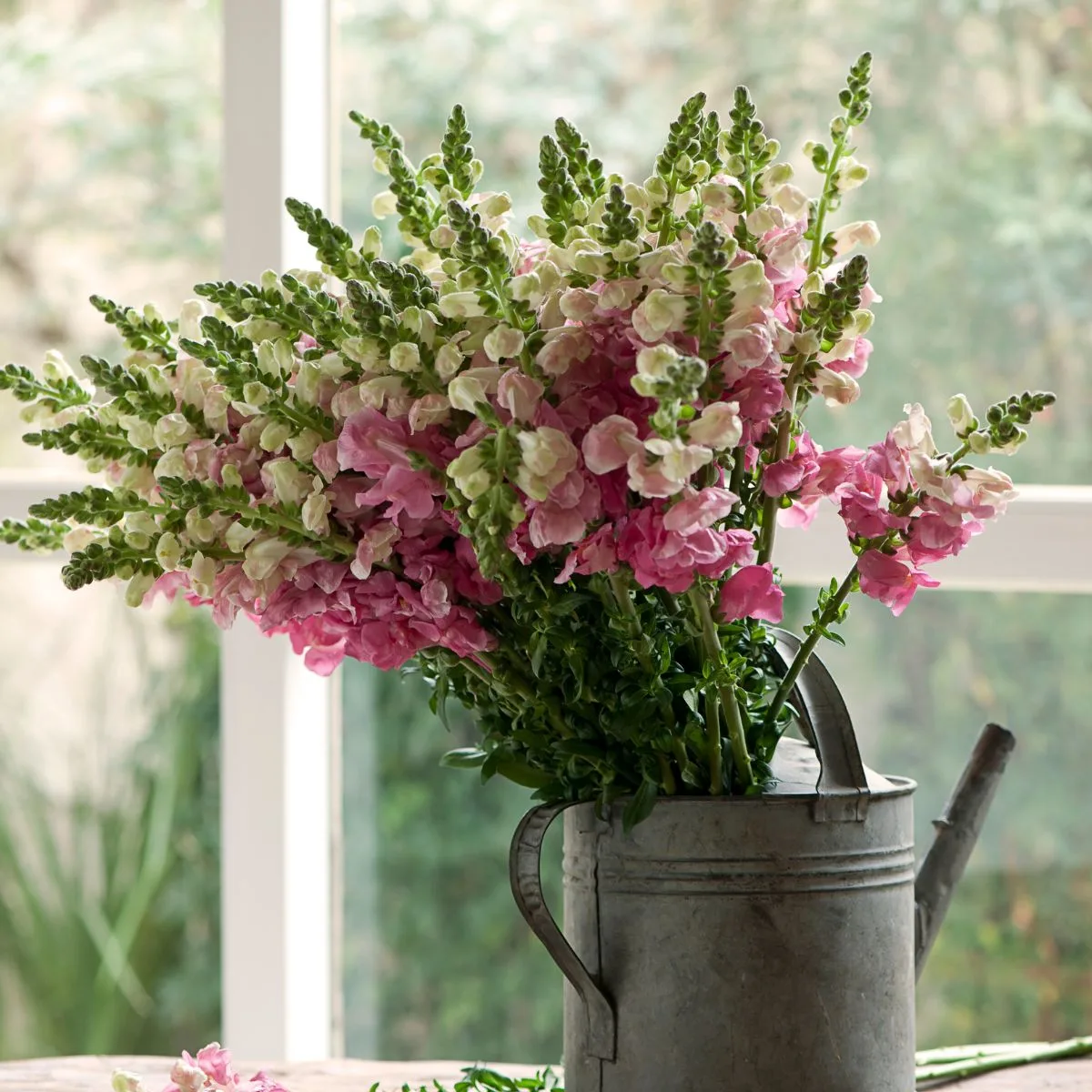
Here are some things that all snapdragons share, regardless of type.
- Snapdragons will attract hummingbirds and butterflies to your garden
- They can grow up to three feet high and spread up to one foot
- Snapdragons are deer-resistant
- They are native to China and the United States
- If you squeeze and release the back of the flowers, they open and close
- They bloom from April until frost season
- In some areas, they are called “Dog’s mouth”, “Lion’s mouth”, or “Dragon flowers”
How to Grow Snapdragons FAQ
If you have questions about growing snapdragons, you’re not alone. Here are some other frequently asked questions on this topic.
Do snapdragons come back every year?
Unlike many other annual flowers, snapdragons will often come back the following year. This is because snapdragons are actually a type of perennial, meaning they will live for several years if given the right conditions. However, snapdragons are typically grown as annuals, as they often do not survive the winter in colder climates. Still, with a little care, snapdragons can provide years of beauty in the garden.
Do snapdragons like sun or shade?
While snapdragons prefer full sun, they will also do well in partial sun or partial shade. The amount of sunlight snapdragons receive will affect the number of blooms on the plant. For example, snapdragons grown in full sun will typically have more blooms than those grown in partial shade. However, snapdragons are relatively easy to care for and will thrive in a variety of conditions.
What month do you plant snapdragons?
In most cases, snapdragons should be planted in late April or early May. This allows them to take advantage of the warmer weather and longer days, which encourages more robust growth. Additionally, planting snapdragons early in the season helps to ensure that they will bloom before the hotter summer months arrive. As a result, snapdragons that are planted in late April or early May tend to be larger and more vibrant than those that are planted later in the season.
Can snapdragons grow in pots?
Snapdragons are a popular choice for pots and other containers. They are easy to grow and come in a wide range of colors, making them a versatile addition to any garden. Snapdragons also tolerate a wide range of temperatures, which makes them ideal for both indoor and outdoor plantings. While snapdragons can be grown in almost any type of pot, they prefer well-drained soil and plenty of sunlight. In general, snapdragons will do best in pots that are at least 12 inches wide and 18 inches deep. With proper care, snapdragons can thrive in pots for many years
Do snapdragons multiply?
The answer is yes! Snapdragons are self-seeding, meaning that they will drop their seeds at the end of the season and grow new plants the following year. However, snapdragons will only multiply if they are grown in ideal conditions. They need full sun and well-drained soil, and they will only self-seed if they are not deadheaded. Deadheading is the process of removing spent flowers, and it ensures that the snapdragon’s energy goes into producing seeds.
Do snapdragons grow back after cutting?
The answer is yes! In fact, snapdragons are one of the few flowers that actually benefit from being cut. When snapdragons are cut, they produce a hormone called auxin that helps them to form new roots and grow back quickly. So if you’re looking for a flower that you can enjoy for a long time, snapdragons are a great option.
With a little bit of care, snapdragons will bloom for months, bringing beauty to any garden. They are a favorite among gardeners and floral arrangers alike because of their bright colors and unique shape. Snapdragons can be planted in the spring or fall, and they prefer a sunny location (but not too hot) with well-drained soil. So, whether you live in a hot climate or a cold climate, snapdragons are a great addition to your garden.
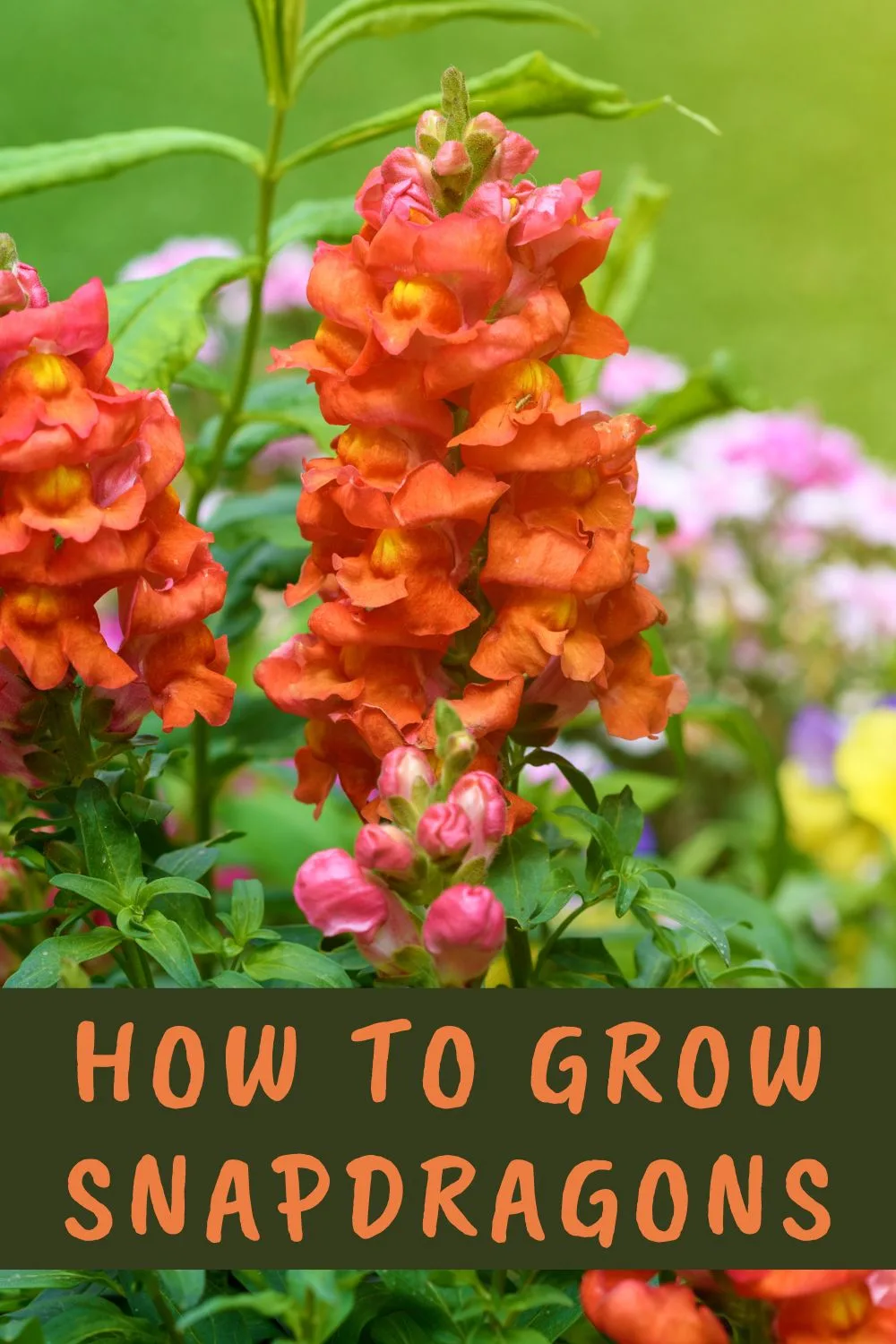
Adriana Copaceanu is a passionate nature lover living in the country on her dream property where she grows vegetables, lavender, and wildflowers that she shares with the wildlife they attract. When she's not in the garden, she loves spending time with her chickens and planning her next nature project. Check out her books below:
How to Grow Lavender for Fun and Profit: Lessons Learned from Planting Three Hundred Lavender Plants



Samantha
Saturday 4th of February 2023
Thanks for the great article about snapdragons. The article had so much great information that I didn't even realize I needed. I'm new to all of this. For a long time I felt like I could kill a plastic plant but with great information like I got from you I feel like I have a chance. It's getting information that I didn't even realize I needed like what I got from your article that I think is going to help me tremendously. Thank you so much.